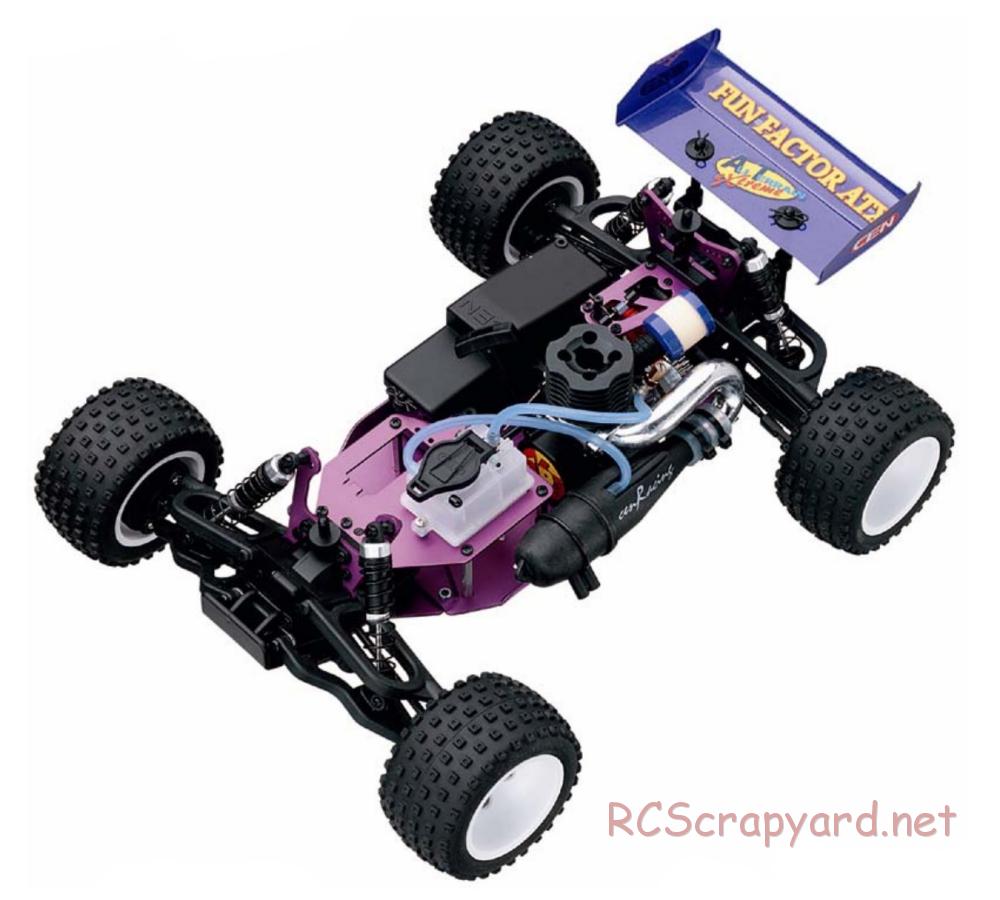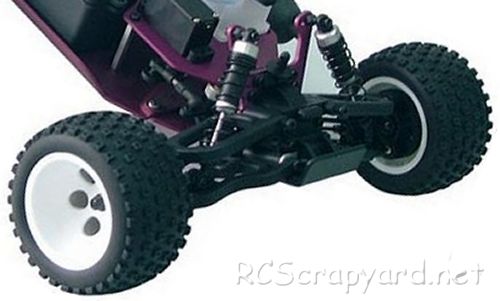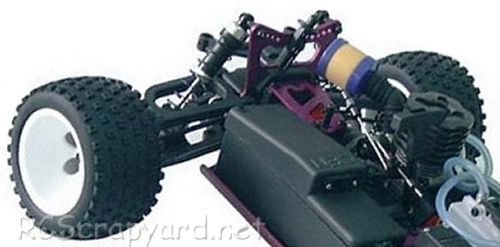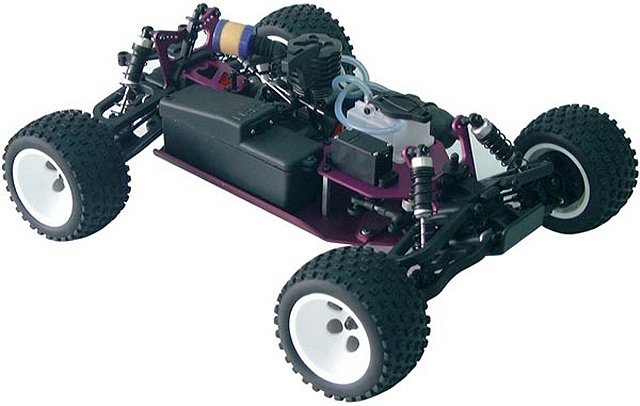

|
|
|


|
|
1/10 Scale Nitro Buggy:
CEN Fun Factor ATX - Radio Controlled ModelHistory and Info:
Introduced in 2002, one year after the original CEN "Fun Factor" series, the ATX Buggy - # 9228, was a shaft driven 4WD model, available RTR.
▼ Scroll Down for More Images ▼
|








|
|
|

★ CEN Fun-Factor ATX Buggy Chassis ★

★ CEN Fun-Factor ATX Buggy Chassis ★

★ CEN Fun-Factor ATX Buggy Chassis ★

|
Buying a Used CEN Fun Factor ATX Buggy (and What to look for)
Make a General Visual Inspection
Check the Body-Shell
If the body shell of your CEN Fun Factor ATX is broken, ripped or damaged in any way, this can be easily repaired with rubber solution glue. Also, for added protection and if available for your Fun Factor ATX model, fit an under guard to stop dirt and gravel entering the chassis. Drive Shafts and Turnbuckles
Examine the Drive System
The gearbox of your used Buggy should be opened up to check for gear wear and lubrication. A thin coat of grease is often used on internal gears and although this is fine for basic running around on the back yard, if you intend to race your Buggy at a higher level, this should be removed and replaced with racing oil (ZX1 or Teflon Oil). Of course, this should be reapplied after each race meeting. Pinions and Spur Gears
Don't Neglect the Ball-Joints
Ball joints always cause problems. For top level Nitro Buggy racing, the plastic ball connectors should be checked and if deemed necessary changed after every meeting. A simple thing like a loose fitting connector popping off could easily end your race, so better safe than sorry. Steering Servo and Servo-Saver
Stabilizers
If body roll on your CEN Fun Factor ATX is a problem, handling can be improved with the use of stabilizers, anti roll or sway bars, stiffer tuning springs and, or, thicker silicone oil in the dampers. Don't Forget those Bearings
▼ Scroll Down for More Articles and Advice ▼
Or, check out our RC Model Car Setup Guide
|
|
Manufacturers and Brands Catalogued, Listed and Reviewed by RC-Scrapyard.
At present, the RC Model Manufacturers, Brands and Distributors covered by us are: ABC Hobby, Academy, Acme Racing, Agama Racing, Amewi, Ansmann Racing, ARRMA, Team Associated, Atomic RC, Axial, AYK, Bolink, BSD Racing, Capricorn, Carisma, Carson, Caster Racing, Cen, Corally, Custom Works, Durango, Duratrax, ECX - Electrix, Exceed RC, FG Modellsport, FS-Racing, FTX, Fujimi, Gmade, GS-Racing, Harm, HBX, Helion, Heng Long, Himoto Racing, Hirobo, Hitari, Hobao, Hong-Nor, Hot Bodies, HPI, HSP, Intech, Integy, Jamara, JQ Products, Kawada, Kyosho, Losi, LRP, Maisto, Mardave, Marui, Maverick, MCD Racing, Megatech, Mugen, New Bright, Nichimo, Nikko, Nkok, Ofna, Pro-Pulse, Protech, PTI, RC4WD, Redcat Racing, RJ-Speed, Robitronic, Schumacher, Seben, Serpent, Smartech, Sportwerks, Step-Up, Tamiya, Team-C Racing, Team Magic, Thunder Tiger, Tomy, Top Racing, Traxxas, Trinity, Tyco, Vaterra RC, Venom, VRX Racing, WLToys, X-Factory, Xmods, Xpress, Xray, XTM, Yankee RC, Yokomo, ZD Racing and Zipzaps. |

|
Hints, Tips and Information
Ride Height
To allow the suspension on any RC model to do its work properly, it needs to ride in a position where it is able to react to any bumps and holes it may encounter on the track. Therefore, it needs to be adjusted to somewhere in-between those limits. That position is commonly termed "ground clearance" or "ride height" and is generally measured as the distance between the underside of the chassis and the ground, with the motor and battery etc installed. |
|
Hints, Tips and Information
Glow Plugs for Nitro Engines
Nitro Engines for RC Models use a system to ignite the fuel mixture that simply employs a wire coil in a small housing called a Glow Plug. To start the engine, a battery powered Starter, or Glow Igniter, is connected to the Glow Plug and electric current heats the coil to white hot, so that when you pull start your engine, the air - fuel mixture in the cylinder is ignited. With the engine now running, the starter is no longer required. Heat generated under compression is enough to keep the coil element hot enough to keep the engine running.
|
|
RC Models:
|
Radio & Motors: |
Other
Accessories: |